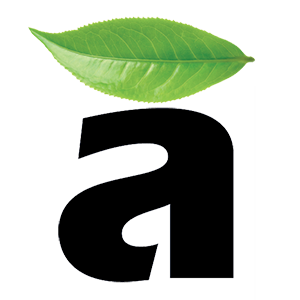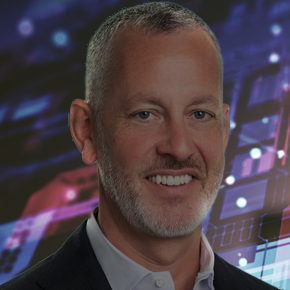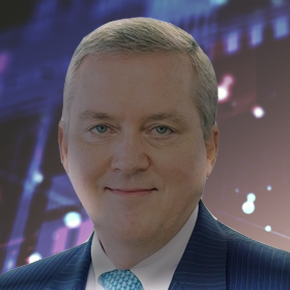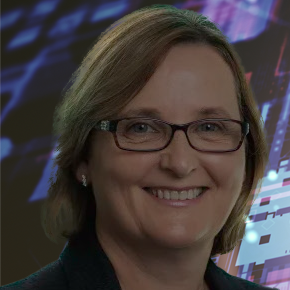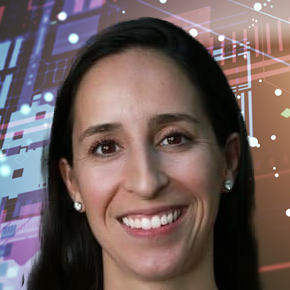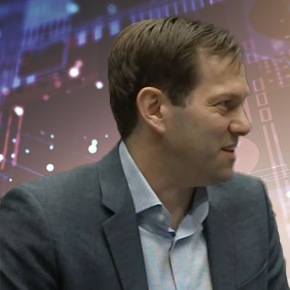
Transcript
Lifecycle Assessment Data – LCA data – Helps Manufacturers Design and Manufacture More Sustainable Products
The manufacturing world today is feeling the impact of new environmental regulations. There’s CSRD, the corporate sustainability reporting Directive, and the CSDD corporate sustainability due diligence directive, which put manufacturers in the hot seat for reporting and planning their carbon output. Then there’s the international sustainability standards boards, S1 and S2, which lay out guidelines for reporting resource consumption and emissions respectively. And then there’s the Carbon border adjustment mechanism or CBAM, which will make companies pay attention to the environmental cost of material imports, which will soon add up to financial cost as well.
For manufacturing companies scrambling to fulfill these new regulations, the first hurdle is finding the right data. You need benchmarks to calculate carbon energy use and other sustainability goals accurately. And where can you get that data? That’s where LCA data providers come in.
Nic Meyer is the CEO of Ecoinvent, a data provider who has set the standard in the industry for accurate LCA or life cycle assessment data. ecoinvent has been providing environmental impact data for companies for so long that they’ve become almost a default standard in this industry. So we’re excited to hear from their CEO about how he’s thinking about the new constellation of regulations and how this is impacting product design and manufacturing practices today.
On the other side of a table, we’ve got Philippe Adam from aPriori. aPriori is partnering with ecoinvent to give manufacturing companies the tools they need to see the environmental impact of their designs as early as the design stage before a single part hits the factory floor. Philippe is going to talk about how putting the right data into the hands of design engineers early in the process can save companies on cost, carbon, and lengthy life cycle assessments down the road.
Leah Archibald: I’m excited to bring Philippe and Nic on for this conversation, so we can sit back and hear an executive dialogue on the future of sustainable product design and manufacturing.
Two Executives Discuss the Future of Sustainable Product Design and Manufacturing
Philippe Adam: I’m Philippe Adam, Chief Marketing Officer at aPriori. And I’m delighted to be joined by Nic Meyer Today, CEO of ecoinvent. Thank you very much for talking with us.
Nickolas Meyer: Thank you for having us, Phillippe.
Philippe Adam: Nic, maybe you can give us a quick overview of ecoinvent. What do you do?
Nickolas Meyer: Sure, thank you very much. Ecoinvent was born from the Swiss federal research institutes25, 30 years ago. And 10 years ago, we spun off as an independent association. We are a mission-driven organization, which means that we ultimately take every dollar that we earn and invest it back into our teams, and the data that we produce.
The data that we produce is called secondary or background data, which is really useful for helping organizations like yourselves to help customers figure out how they should set up a process or what products they should build, or how the product should be built.
Philippe Adam: Can you tell them more about who are your customers today?
Nickolas Meyer: Sure, happy to. Our customers range from universities to governments to large organizations. At the enterprise level, many accounting and consulting firms use our data today. Many industrial firms use our data today. We definitely do have a wide customer base, and I think we’re really privileged to have that.
Philippe Adam: When we’re making our analysis to partner with a data provider, we found that you were the leader in this domain. Can you tell us more what makes you the leader and how you want to continue to maintain this leadership position?
Nickolas Meyer: Sure, thank you for passing us as the leader, we like to think that we’re certainly one of the leaders in this domain. Ultimately, we have really focused on high levels of transparency in the data that we produce, and a really, really strong focus on ensuring data quality throughout. Additional to that, we make sure that our database is fit for purpose, and this is something that’s really important if you’re going to be using data. It’s got to actually be right for the job. This is something where every year we have the team working on updating the database, updating data sets, broadening the number of data sets that we have.
Philippe Adam: Using your data to implement our new module around sustainability, we see that the data you provide are high quality, and I know that you’ll continue to work on it, so thank you very much for this overview.
Where Can Manufacturers Have the Most Impact on Carbon Reduction?
Nic, maybe we can switch gears and ask the next question, when you meet with a lot of customers today, where do you see manufacturers having the most impact on carbon reduction?
Nickolas Meyer: It is in the product design phase, certainly. If you’re able to take a product and make sure that it’s designed well, then it will have a better life cycle, and that’s what we’re all about.
Philippe Adam: That’s what we see as well in terms of product design. The sooner or the earlier you can take the right decision, the better you’re going to be in terms of multiple characteristics, including sustainability as well as cost and manufacturability.
When you look at that, how do you feel about all the different regulations that we see in the different countries? How do you see this ecosystem moving based on regulations that need your reporting? What’s you view around that?
Nickolas Meyer: So that’s a great question. Ultimately, this year really has been unprecedented in terms of the number of regulations that have come out. But also what we see is convergence in the regulations in the area of financial materiality. Not so much a convergence in impact in environmental impact materiality. I think that’s a concern to me specifically to financial materiality, which is a big driver for organizations.
The Impact of S1, S2, CSRD, and CSDD
We’ve seen the international sustainability standards board release with the help of the IFRS foundation, S1 and S2. S2 is particularly related to emissions on data, which is where we are interested. This more or less will flow down into most of the gap accounting principles in large economies around the world.
This will have a fantastic impact on how we account for climate-related impacts. Now, in terms of what is being asked on the other side of the business, which is let’s say the product side, we have the CSRD and CSDD. That’s the sustainability reporting Directive and the sustainability due diligence directive. Ultimately, one asks an organization to report on what they’re planning, also what they have in terms of emissions, and the other one, the due diligence directive, asks an organization to say what they think they might do.
What we’re waiting for is the directive that says, you actually need to do something, and this is where I run into a little bit of a challenge. There seems to be a gap between planning and doing. And particularly in the environmental space, we have quite some divergence. That may be inconsistencies in how the reporting should be done. I don’t think anyone’s unwillingly working forward in this area. It’s just that the rules are different wherever you look. Country by country, region by region, and if a organization is global, wouldn’t it be nice if they’re rules were somewhat consistent.
Philippe Adam: That’s for sure! We see also a few other elements from the customer interaction, we have. One is around CBAM – the Carbon border adjustment mechanism – which is going to impact companies around the imports of the material they use. And so we see that a lot of companies discover that starting in October they will need to provide first the reporting elements around those imports materials. But starting in 2026, they’re going to be penalized if they don’t respect those levels. And as such, some experts are anticipating that material import could be impacted by a 30% price increase if companies do not achieve those target. So that’s a big thing that we see also beyond those regulation and new compliance rules that are chasing the product.
Another elements that we also see is customer behavior. Some of our customers are starting to see that a green view of a product starts to be very important for buyers. And some of the buyers are ready to pay a bit more in order to have a green product rather than a non-green product. So some of our customer and product manufacturers see this sustainability topic as a competitive differentiator for them.
Nickolas Meyer: They’re both amazing points. But I’ll take the point about competitive advantage, because I think that’s ultimately what’s going to drive this problem forward. The world needs innovation, but if organizations want to continue to innovate, then they have got to look at the data that they have around them. What CSRD is leading to is they force an organization to look inside itself, to look outside itself, and to look towards supply chain.
Now, if you just see this as a chore and you just do the report and submit it and then file it away with all the other power points that get filed away and don’t get used, then not much value will come from it. But if you take it, you look at it and you try to develop new business models around it, that’s where it gets quite interesting.
This is not new. Many companies around the world have been building businesses around sustainability for years and years. Take a look at the Dow Jones Sustainability Index and there’s a few companies that have been at the top of that for years. I come from one of them a long time ago, and ultimately these companies already figured out that sustainability is a really strong factor in competitive advantage.
Philippe Adam: What we see today is a lot of companies do have a pretty good idea around electricity consumption or one specific characteristic of an element, but they don’t have an overview when they design a product. What are the consequences of all those different aspects in the price, in the carbon footprint, in even the carbon usage of the product?
Sustainability Reporting is Shifting from Downstream to Upstream
Nickolas Meyer: Historically, sustainability — and let’s call it the mid 2010s — was all about downstream. What are we going to do with our waste that we’ve produced? What are we going to do with the emissions that we’re producing driving around our vehicles? Those are downstream affects. But what you’re asking is an upstream question: How can we design better products? How can we design better processes? This ultimately is the next phase of sustainability.
Philippe Adam: Yes, and this is where we come into play when we started to build this partnership. With the aPriori solution, what we bring to customers today is we analyze a 3D product design and we very quickly drive insights into all these characteristic that they want to look at. One of them has always been cost. Now one of them is carbon footprint or carbon usage. Now they can do some guidance around how to minimize the cost, how to minimize the waste, how to optimize the manufacturing process. That’s where everything comes together. Because a lot of manufacturers do have the question: I want to be sustainable, but what is the cost of my sustainability? With “what if” scenarios in aPriori, they can do that.
Nickolas Meyer: If you look at it historically, LCA was always very complicated. It’s still at heart is a complicated field, but it’s moving towards a way where it’s more digestible now. And certainly a lot of the practitioners, consultants, software manufacturers in the world, such as aPriori, are finding ways to get the data into people’s hands in an understandable way.
Philippe Adam: I’m glad you mentioned the LCA, life cycle assessment, because that’s a first step usually for manufacturing companies to understand where they stand. Now with our solution, we give them an opportunity to look at how they can impact that. What type of initiatives, very concrete initiatives they can take to move to the next step. Thank you very much for coming on this journey with us!
Nickolas Meyer: Thank you.
